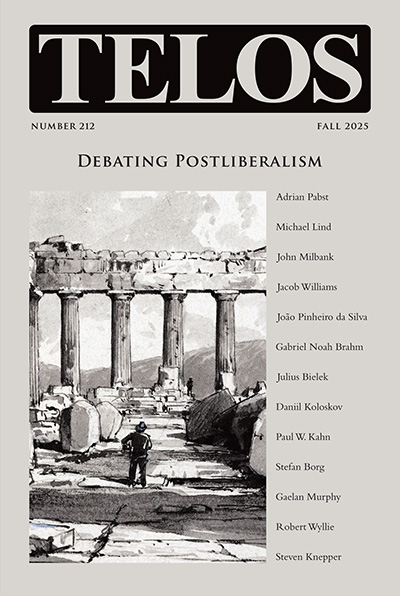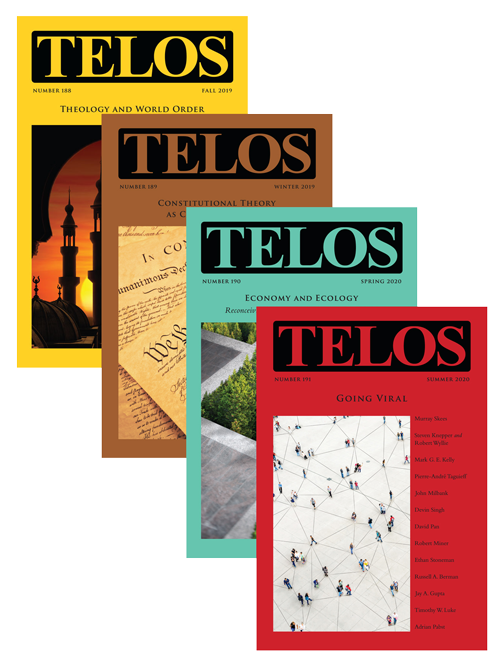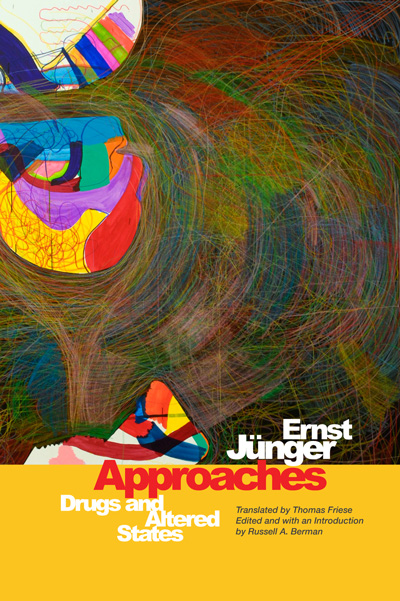By Frederick H. Pitts · Tuesday, July 10, 2012 As an occasional feature on TELOSscope, we highlight a past Telos article whose critical insights continue to illuminate our thinking and challenge our assumptions. Today, Frederick H. Pitts looks at Salvatore Veca’s “Value, Labor, and the Critique of Political Economy” from Telos 9 (Fall 1971).
Capital is dead labor which, vampire-like, lives only by sucking living labor, and lives the more, the more labor it sucks.
—Karl Marx, Capital
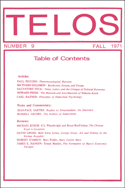 Salvatore Veca’s 1971 essay “Value, Labor, and the Critique of Political Economy” summarizes the treatment of contained and required labor in Adam Smith, David Ricardo, and Karl Marx. Most interesting is the manner in which Veca temporalizes this distinction in political economy. He draws our attention to the opposition between past labor and present, dead labor and living; namely, “the dominance of past, materialized, accumulated labor over immediate, living labor”: Salvatore Veca’s 1971 essay “Value, Labor, and the Critique of Political Economy” summarizes the treatment of contained and required labor in Adam Smith, David Ricardo, and Karl Marx. Most interesting is the manner in which Veca temporalizes this distinction in political economy. He draws our attention to the opposition between past labor and present, dead labor and living; namely, “the dominance of past, materialized, accumulated labor over immediate, living labor”:
Starting from the analysis of the typical character of labor, it is possible to reconstruct towards the surface of the system the progressive stratifications and determinations of a totality which must, however, be traced back to its base, i.e., to that unequal exchange which contaminates the world of commodities and which reveals the class violence, the elementary mechanism of exploitation, and the dominance of dead labor over living labor.
Veca presents the same temporal picture of past and present labor that moved Marx to crisscross Capital with a metaphorical cast of ghostly manifestations, vampires, and the undead. Veca’s paper suggests the extent to which Marx’s range of metaphors is no mere literary conceit, but rather it is a key feature of fundamental theoretical nodes in his critique of political economy. As we shall see, the specter of dead labor has deeper conceptual foundations in Marx’s forerunners, but this idea also has contemporary relevance with reference to present-day philosophical trends.
Continue reading →
By Daniel Purdy · Monday, July 9, 2012 Daniel Purdy’s “Media and Architecture at the Birth of the Public Sphere” appears in Telos 159 (Summer 2012). Read the full version online at the Telos Online website, or purchase a print copy of the issue here.
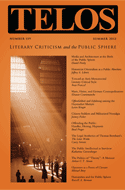 This article examines the policy discussion surrounding the concept of “the European city.” This innocuous phrase has become a source of considerable concern among urban planners, architects, and sociologists because “the European city” is consistently described as under siege by the economics of globalization and new media technology. At stake is an idealized experience of urbanity that is closely associated with the history of European civilization, the emergence of liberal democracy, personal freedoms, and the market economy as a localized exchange that could be regulated by the state. Despite these modern connotations, the ideal type of this European city is medieval, wherein well-preserved historic buildings are aligned along irregular streets open only to pedestrians. The type of building that today is considered typical of the European city predates the Enlightenment and most certainly has little in common with industrialization. This article examines the policy discussion surrounding the concept of “the European city.” This innocuous phrase has become a source of considerable concern among urban planners, architects, and sociologists because “the European city” is consistently described as under siege by the economics of globalization and new media technology. At stake is an idealized experience of urbanity that is closely associated with the history of European civilization, the emergence of liberal democracy, personal freedoms, and the market economy as a localized exchange that could be regulated by the state. Despite these modern connotations, the ideal type of this European city is medieval, wherein well-preserved historic buildings are aligned along irregular streets open only to pedestrians. The type of building that today is considered typical of the European city predates the Enlightenment and most certainly has little in common with industrialization.
The notion of the “European city” has a two-faced relation to globalization: on the one hand, the many economic, political and cultural relations that join cities together into the European market system constitute one of the large-scale networks of the global economy that historians can trace back to the height of the Middle Ages; on the other, the term is invoked today in order to draw a boundary and insist on a distinction so as to preserve a quality that is considered fundamentally European. This distinctly urban character is associated with public spaces that foster democratic institutions. Since the Middle Ages, the argument runs, European cities have been designed to preserve openly accessible forums for democratic politics and capitalist exchange. The preservation of European democracy is therefore often correlated with the maintenance of these urban places. I argue that the successful use of urban centers for politics and exchanges always also depends on the existence of small isolated spaces cut off from the general population. For urban public spaces to accomplish their political and economic ends, they have always required their antithesis, the exclusive private room. Nowhere is this juxtaposition more important than in the Enlightenment institution of the public sphere.
Continue reading →
By Loren Kruger · Thursday, July 5, 2012 Loren Kruger’s “Literary? Public? Proletarian: Öffentlichkeit and Erfahrung among the Haymarket Martyrs” appears in Telos 159 (Summer 2012). Read the full version online at the Telos Online website, or purchase a print copy of the issue here.
 This article uses Negt and Kluge’s conception of proletarian Öffentlichkeit or public spheres and practices as a point of departure for analysis the writing and speeches of the social activists who were tried and executed for anarchism and other crimes against law and order after the Haymarket incident in Chicago in 1886. This analysis includes contextual commentary on the Great Chicago Fire, the contribution of Germans and other immigrants to socialist agitation in the United States and thus to the practice of tactical cosmopolitan and transnational culture, and the legacy of the Haymarket for current critics of capitalism from the Industrial Workers of the World to the Occupy Movement. This article uses Negt and Kluge’s conception of proletarian Öffentlichkeit or public spheres and practices as a point of departure for analysis the writing and speeches of the social activists who were tried and executed for anarchism and other crimes against law and order after the Haymarket incident in Chicago in 1886. This analysis includes contextual commentary on the Great Chicago Fire, the contribution of Germans and other immigrants to socialist agitation in the United States and thus to the practice of tactical cosmopolitan and transnational culture, and the legacy of the Haymarket for current critics of capitalism from the Industrial Workers of the World to the Occupy Movement.
Continue reading →
By Frederick Wertz · Wednesday, July 4, 2012 As an occasional feature on TELOSscope, we highlight a past Telos article whose critical insights continue to illuminate our thinking and challenge our assumptions. Today, Frederick Wertz looks at Luigi Marco Bassani’s “Jefferson, Calhoun and States’ Rights: The Uneasy Europeanization of American Politics,” from Telos 114 (Winter 1999).
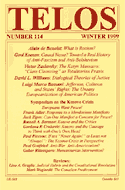 In an enlightening piece, Luigi Marco Bassani reopens the door on an all-too-closed chapter of American political discourse: states’ rights. He poses a question that he sees to be the crux of one of the most permanent issues in American history: “In 1776, did the thirteen colonies separate themselves from Great Britain collectively or singularly?” This question, regarding the role of the Federal government in American society, was the essence of American politics for nearly a century. Though political debate and war in the 19th century resulted in an irreversible consolidation of federal power, the issue still crops up in the American political ethos during times of crisis or extreme polarization. Bassani usefully highlights the two most important proponents of states’ rights, Thomas Jefferson and John C. Calhoun. In an enlightening piece, Luigi Marco Bassani reopens the door on an all-too-closed chapter of American political discourse: states’ rights. He poses a question that he sees to be the crux of one of the most permanent issues in American history: “In 1776, did the thirteen colonies separate themselves from Great Britain collectively or singularly?” This question, regarding the role of the Federal government in American society, was the essence of American politics for nearly a century. Though political debate and war in the 19th century resulted in an irreversible consolidation of federal power, the issue still crops up in the American political ethos during times of crisis or extreme polarization. Bassani usefully highlights the two most important proponents of states’ rights, Thomas Jefferson and John C. Calhoun.
Continue reading →
By Sunil Kumar · Tuesday, July 3, 2012 As an occasional feature on TELOSscope, we highlight a past Telos article whose critical insights continue to illuminate our thinking and challenge our assumptions. Today, Sunil Kumar looks at Theodor W. Adorno’s “The Stars Down to Earth: The Los Angeles Times Astrology Column,” from Telos 19 (Spring 1974).
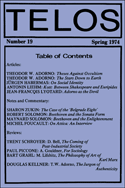 “The Stars Down to Earth” is the content analysis of an astrology column that Adorno wrote during a return visit to the United States from Germany in 1952–53 and appeared in translation in Telos in 1974. The column under scrutiny called, “Astrological Forecasts,” was written by Carroll Righter and appeared in the Los Angeles Times, described by Adorno as a conservative newspaper, leaning far to the right wing of the Republican Party. He engages in a detailed analysis of the column between November 1952 and February 1953. His method is that of the systematic construction of the imagined readers of the column and a critique of the ideology that the column reinforces, that of accepting the social system as fate. Adorno hypothesizes that columns such as these mold to some extent the reader’s thinking and foster an element of blind acceptance. The impetus of the piece, as in “The Thesis against Occultism” (1947), is to highlight the tendency toward irrationality and authoritarianism in mid-twentieth-century Western culture. In the analysis of the column, this irrationality is reflected by the readers’ acceptance of the column’s absurd claim to be inspired by the stars, and the need to look for guidance and succor in the advice of an expert authority on mundane matters. The stars stand in for the reader of the column as a source of authority, and the belief in astrology represents for him or her a belief in a higher order—one that also appears to present to events a veneer of rationality to its opaque origin. “The Stars Down to Earth” is the content analysis of an astrology column that Adorno wrote during a return visit to the United States from Germany in 1952–53 and appeared in translation in Telos in 1974. The column under scrutiny called, “Astrological Forecasts,” was written by Carroll Righter and appeared in the Los Angeles Times, described by Adorno as a conservative newspaper, leaning far to the right wing of the Republican Party. He engages in a detailed analysis of the column between November 1952 and February 1953. His method is that of the systematic construction of the imagined readers of the column and a critique of the ideology that the column reinforces, that of accepting the social system as fate. Adorno hypothesizes that columns such as these mold to some extent the reader’s thinking and foster an element of blind acceptance. The impetus of the piece, as in “The Thesis against Occultism” (1947), is to highlight the tendency toward irrationality and authoritarianism in mid-twentieth-century Western culture. In the analysis of the column, this irrationality is reflected by the readers’ acceptance of the column’s absurd claim to be inspired by the stars, and the need to look for guidance and succor in the advice of an expert authority on mundane matters. The stars stand in for the reader of the column as a source of authority, and the belief in astrology represents for him or her a belief in a higher order—one that also appears to present to events a veneer of rationality to its opaque origin.
Continue reading →
By Jaimey Fisher · Monday, July 2, 2012 Jaimey Fisher’s “Citizen Soldiers and Militarized Nostalgia: Genres of War and Place in the 1950s Public Sphere” appears in Telos 159 (Summer 2012). Read the full version online at the Telos Online website, or purchase a print copy of the issue here.
 One of the most celebrated postwar German films, Bernhard Wicki’s The Bridge (Die Brücke, 1959), has garnered remarkably little scholarly attention, but the film both reflects and engages fundamental changes in the German public sphere in the 1950s and 1960s. It has traditionally been assumed (right through the present) that the 1950s was an era driven by an emphatic forgetting of Germany’s criminal wartime past, but recent work reflects a turn in our understanding of the 1950s thinking about this past. It is now increasingly acknowledged that 1950s society and culture did engage the past, but in often highly refracted ways. One of these ways comes into focus with the cinema, particularly in the dominant genre cinemas of the 1950s. While the so-called Heimatfilm has dominated scholarly thinking about film in this era, the war film (as the second most popular genre of the decade) was also a crucial means to represent, but also distort, memories of the Nazi period. The essay considers the role of the war film in the public sphere as well as the representation of the public sphere, and its politics, within the war film genre. The small-town counter public sphere detailed in The Bridge, in fact, shows the film’s engagement not only with the recent war and 1950s memory culture, but also with that other most popular genre of the time, the Heimatfilm. One of the most celebrated postwar German films, Bernhard Wicki’s The Bridge (Die Brücke, 1959), has garnered remarkably little scholarly attention, but the film both reflects and engages fundamental changes in the German public sphere in the 1950s and 1960s. It has traditionally been assumed (right through the present) that the 1950s was an era driven by an emphatic forgetting of Germany’s criminal wartime past, but recent work reflects a turn in our understanding of the 1950s thinking about this past. It is now increasingly acknowledged that 1950s society and culture did engage the past, but in often highly refracted ways. One of these ways comes into focus with the cinema, particularly in the dominant genre cinemas of the 1950s. While the so-called Heimatfilm has dominated scholarly thinking about film in this era, the war film (as the second most popular genre of the decade) was also a crucial means to represent, but also distort, memories of the Nazi period. The essay considers the role of the war film in the public sphere as well as the representation of the public sphere, and its politics, within the war film genre. The small-town counter public sphere detailed in The Bridge, in fact, shows the film’s engagement not only with the recent war and 1950s memory culture, but also with that other most popular genre of the time, the Heimatfilm.
Continue reading →
|
|
 Salvatore Veca’s 1971 essay “Value, Labor, and the Critique of Political Economy” summarizes the treatment of contained and required labor in Adam Smith, David Ricardo, and Karl Marx. Most interesting is the manner in which Veca temporalizes this distinction in political economy. He draws our attention to the opposition between past labor and present, dead labor and living; namely, “the dominance of past, materialized, accumulated labor over immediate, living labor”:
Salvatore Veca’s 1971 essay “Value, Labor, and the Critique of Political Economy” summarizes the treatment of contained and required labor in Adam Smith, David Ricardo, and Karl Marx. Most interesting is the manner in which Veca temporalizes this distinction in political economy. He draws our attention to the opposition between past labor and present, dead labor and living; namely, “the dominance of past, materialized, accumulated labor over immediate, living labor”:  This article examines the policy discussion surrounding the concept of “the European city.” This innocuous phrase has become a source of considerable concern among urban planners, architects, and sociologists because “the European city” is consistently described as under siege by the economics of globalization and new media technology. At stake is an idealized experience of urbanity that is closely associated with the history of European civilization, the emergence of liberal democracy, personal freedoms, and the market economy as a localized exchange that could be regulated by the state. Despite these modern connotations, the ideal type of this European city is medieval, wherein well-preserved historic buildings are aligned along irregular streets open only to pedestrians. The type of building that today is considered typical of the European city predates the Enlightenment and most certainly has little in common with industrialization.
This article examines the policy discussion surrounding the concept of “the European city.” This innocuous phrase has become a source of considerable concern among urban planners, architects, and sociologists because “the European city” is consistently described as under siege by the economics of globalization and new media technology. At stake is an idealized experience of urbanity that is closely associated with the history of European civilization, the emergence of liberal democracy, personal freedoms, and the market economy as a localized exchange that could be regulated by the state. Despite these modern connotations, the ideal type of this European city is medieval, wherein well-preserved historic buildings are aligned along irregular streets open only to pedestrians. The type of building that today is considered typical of the European city predates the Enlightenment and most certainly has little in common with industrialization.  In an enlightening piece, Luigi Marco Bassani reopens the door on an all-too-closed chapter of American political discourse: states’ rights. He poses a question that he sees to be the crux of one of the most permanent issues in American history: “In 1776, did the thirteen colonies separate themselves from Great Britain collectively or singularly?” This question, regarding the role of the Federal government in American society, was the essence of American politics for nearly a century. Though political debate and war in the 19th century resulted in an irreversible consolidation of federal power, the issue still crops up in the American political ethos during times of crisis or extreme polarization. Bassani usefully highlights the two most important proponents of states’ rights, Thomas Jefferson and John C. Calhoun.
In an enlightening piece, Luigi Marco Bassani reopens the door on an all-too-closed chapter of American political discourse: states’ rights. He poses a question that he sees to be the crux of one of the most permanent issues in American history: “In 1776, did the thirteen colonies separate themselves from Great Britain collectively or singularly?” This question, regarding the role of the Federal government in American society, was the essence of American politics for nearly a century. Though political debate and war in the 19th century resulted in an irreversible consolidation of federal power, the issue still crops up in the American political ethos during times of crisis or extreme polarization. Bassani usefully highlights the two most important proponents of states’ rights, Thomas Jefferson and John C. Calhoun.  “The Stars Down to Earth” is the content analysis of an astrology column that Adorno wrote during a return visit to the United States from Germany in 1952–53 and appeared in translation in Telos in 1974. The column under scrutiny called, “Astrological Forecasts,” was written by Carroll Righter and appeared in the Los Angeles Times, described by Adorno as a conservative newspaper, leaning far to the right wing of the Republican Party. He engages in a detailed analysis of the column between November 1952 and February 1953. His method is that of the systematic construction of the imagined readers of the column and a critique of the ideology that the column reinforces, that of accepting the social system as fate. Adorno hypothesizes that columns such as these mold to some extent the reader’s thinking and foster an element of blind acceptance. The impetus of the piece, as in “The Thesis against Occultism” (1947), is to highlight the tendency toward irrationality and authoritarianism in mid-twentieth-century Western culture. In the analysis of the column, this irrationality is reflected by the readers’ acceptance of the column’s absurd claim to be inspired by the stars, and the need to look for guidance and succor in the advice of an expert authority on mundane matters. The stars stand in for the reader of the column as a source of authority, and the belief in astrology represents for him or her a belief in a higher order—one that also appears to present to events a veneer of rationality to its opaque origin.
“The Stars Down to Earth” is the content analysis of an astrology column that Adorno wrote during a return visit to the United States from Germany in 1952–53 and appeared in translation in Telos in 1974. The column under scrutiny called, “Astrological Forecasts,” was written by Carroll Righter and appeared in the Los Angeles Times, described by Adorno as a conservative newspaper, leaning far to the right wing of the Republican Party. He engages in a detailed analysis of the column between November 1952 and February 1953. His method is that of the systematic construction of the imagined readers of the column and a critique of the ideology that the column reinforces, that of accepting the social system as fate. Adorno hypothesizes that columns such as these mold to some extent the reader’s thinking and foster an element of blind acceptance. The impetus of the piece, as in “The Thesis against Occultism” (1947), is to highlight the tendency toward irrationality and authoritarianism in mid-twentieth-century Western culture. In the analysis of the column, this irrationality is reflected by the readers’ acceptance of the column’s absurd claim to be inspired by the stars, and the need to look for guidance and succor in the advice of an expert authority on mundane matters. The stars stand in for the reader of the column as a source of authority, and the belief in astrology represents for him or her a belief in a higher order—one that also appears to present to events a veneer of rationality to its opaque origin. 